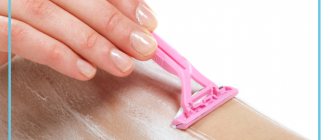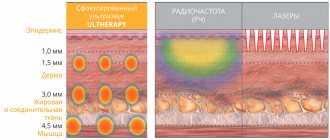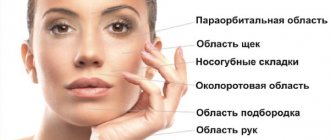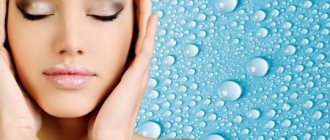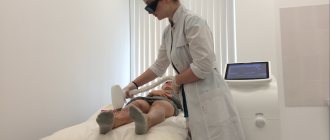Plasma therapy is the injection of the patient’s own purified plasma under the skin. Several injections are made throughout the treatment area so that the distribution of plasma in the problem area is as uniform as possible. The procedure has a very beneficial effect on the skin, the main effect is stimulation of skin fibroblasts and the production of elastin and collagen. Visually, the skin tightens after a course of injections, becomes glowing and youthful in appearance.
Plasma, processed in a special way, contains a large number of platelets, which greatly activate metabolic processes in the place where they are injected. The complex effect of plasma therapy is the launch of self-rejuvenation from the inside. For this, the patient’s body’s own liquid, the “native” plasma, is used, so no rejection or allergy reaction occurs at the injection site.
Quite often, during plasma therapy, a course of injections of hyaluronic acid is simultaneously carried out, which restores the youthful volume of the skin, normalizes its moisture and stimulates the production of collagen and elastin. In addition, microneedle injections have a stimulating effect on the process of tissue regeneration.
Plasma therapy can be performed not only on the face, but also on many other parts of the body (hips, buttocks, chest, arms, etc.). It allows you to tighten weakened and sagging skin and smooth out cellulite. Sometimes plasma injections are used to relieve excessive dryness of the genitals.
This method of rejuvenation not only gives a well-defined cosmetic effect, but also does not cause severe trauma and does not require long and complex rehabilitation. Patients can very quickly return to a normal lifestyle and usual activities.
Effect of plasma therapy
During experiments, scientists discovered that platelet autoplasma has the effect of an “elixir of youth.” When introduced into the skin, it stimulates the production of elastin and collagen, normalizes the supply of oxygen to tissues, makes the skin more moisture-filled, etc. All these effects do not remain visually invisible - the skin tightens, becomes elastic and moisturized, wrinkles are smoothed out.
Plasma therapy increases the local immunity of the skin, which has a beneficial effect on pustular and inflammatory diseases. In addition, there is a powerful stimulation of the regeneration of damaged tissue, so plasma therapy is sometimes used to accelerate the healing of skin damage.
Plasma therapy is used not only on the skin, but also on the mucous membranes. A very rapid tissue response is observed on the mucous membranes. But even in the skin, the very first effect (tissue response) is observed within two hours after injection. However, it takes time for collagen and elastin to grow, so the main effect appears after 1-2 weeks and then increases for some time. The effect of plasma therapy lasts from six months to a year, and sometimes more.
The greatest effect is observed in tissues directly in contact with the injection site (injection point). An important rule of the procedure is to completely “envelop” the entire area of tissue to be treated with plasma therapy. There should be no gaps.
The difference between plasma therapy and PRP therapy
Plasma therapy and PRP therapy are procedures with the same principle of action, but slightly different in the material used. Their effect is also somewhat different. The main difference is the density of platelet concentration per microliter. processed plasma. For plasma therapy, plasma containing 200 - 4000 thousand platelets per μl is prepared, and for PRP therapy, plasma containing 1,000,000 platelets per μl is used.
Well, there are slight differences in the frequency of injections in the course - with plasma therapy they are given more often and the number per course is greater. The average standard course of plasma therapy includes 4 sessions with a frequency of 7-10 days (to maintain the result, 2 courses are done per year), and the standard average course of PRP therapy includes 3 sessions with a month interval between them (to maintain the result, the course is repeated once a year) .
The effectiveness of plasma therapy for arthrosis
After the procedure, discomfort and soreness may linger for some time at the injection site, but they quickly pass. After the first procedure, all patients note improvement: their pain gradually decreases by the end of the week. In the future, with each procedure the pain becomes less and less.
Any localization of arthrosis has serious complications, so you should not delay treatment.
See how easily the disease can be cured in 10-12 sessions.
After 5–6 injections, most patients feel an improvement in limb function: walking becomes less painful, and the duration of painless walks increases. After completing the course of joint treatment, patients forget about their problems. For severe arthrosis, courses of injections are repeated twice a year, which significantly improves the quality of life of patients.
Plasma therapy is a new effective method for the treatment and rehabilitation of arthrosis. Doctors at the Moscow Paramita clinic successfully use it in the treatment of both initial and advanced stages of arthrosis of various localizations.
Literature:
- Emelin A.L., Pankov I.O. MODERN APPROACHES TO THE TREATMENT OF POST-TRAUMATIC ARTHROSIS OF THE KNEE // Modern problems of science and education. – 2016. – No. 3.
- Mastykov A.N., Deykalo V.P., Samsonova I.V., Boloboshko K.B. The effectiveness of platelet-rich plasma in the treatment of traumatic cartilage defects of articular surfaces. Surgery news 2013.
- Kashevarova N.G., Alekseeva L.I. Risk factors for the progression of osteoarthritis of the knee joints // Scientific and practical rheumatology. 2014. No. 52(5). pp. 553–561
- Martel-Pelletier J., Mineau F., Jolicoeur FC et al. In vitro effects of Diacerhein and Rhein on IL-1 and TNF-a system in human osteoarthritis synovium and chondrocytes // J Rheum. Vol. 25. P. 753–762.
- Hochberg MC, Martel-Pelleiter J., Monfort J. et al. Combined chondroitin sulfate and glucosamine for painful knee osteoarthritis: a multicenter, randomized, double-blind, non-inferiority trial versus celecoxib // Ann Rheum Dis. 2016. 75. P. 37–44.
Themes
Arthrosis, Treatment methods, Joints Publication date: 12/08/2019 Update date: 11/12/2020
Reader rating
Rating: 3.5 / 5 (6)
What forms of plasma are used?
The native form is autologous plasma prepared using classical centrifugation technology. It is used most often in cosmetology practice. This plasma restores the water balance in the skin, reduces age-related changes and activates regeneration. This is the most biologically stimulating form of plasma.
Fibrin form of autologous plasma - heated at a temperature of 56C. As a result, fibrinogen irreversibly clots. The resulting fibrin form is a specific mesh matrix on which monocytes, fibroblasts and other cells accumulate, which activate collagen production. Fibroblasts attracted and accumulated on the injected fibrin significantly increase skin turgor and thicken it.
The gel form of autologous plasma is heated in a thermostat for 10 minutes to a temperature of 75-80 C. This plasma is injected into the deep layers of the dermis. It has the strongest effect of strengthening the skin by stimulating the formation of collagen and elastin fibers and best corrects age-related deformational changes. After administration, a lifting effect is observed that increases over several weeks.
The essence of the method
The name PRP is an abbreviation for Platelet rich plasma (blood plasma enriched with platelets). We are talking about a substance with a high platelet content. But where do they get this composition and how do they use it? This will be discussed further below.
Some historical facts
The method is essentially not new. Active searches were conducted back in the 20th century. The first sources on the topic of using platelet-rich plasma to eliminate pathologies of the musculoskeletal system appeared in the 70s of the last century.
More recent articles by American researchers were published in 1997-1998. They talked about the use of the enriched composition in maxillofacial surgery. The new technique quickly moved to Europe. In the 21st century, it is used in almost all areas of medicine, as well as cosmetology.
What is PRP therapy
Treatment of joints with the PRP method is based on the functional properties of human blood platelets. The elements are known as clotting factors. They promote the formation of a blood clot when a blood vessel is damaged. Thanks to them, wounds stop bleeding.
But the main feature is that these blood elements help the regeneration of connective tissue cells. This fact became the reason for their use in the treatment of joint diseases. They stimulate fibroblast cells to actively synthesize collagen and elastogen. These substances are part of the bone and cartilage system, skin, and ligaments.
Enriched blood plasma contains up to 1000–2500×1009/l. platelets. In their usual form they are no more than 180–320×109/l. Venous blood is used for manipulation. Its separation and enrichment is achieved using a centrifuge.
Blood components have different weights and sizes. As a result of centrifugation, the biomaterial in the test tube is stratified. The heavier, red elements settle to the bottom, and the enriched plasma forms the top layer. The result is a concentrated composition.
Blood plasma prepared for the procedure
Growth factors
These blood cells contain bioactive substances - growth factors. They have a protein structure. There are several of them, which explains the multifaceted effect of the medicine.
- insulin-like IGF
– regulates cell growth, migration and development; - platelet PDGF
– ensures cellular regeneration (survival); - transforming TGF
– inhibits tissue necrosis, suppresses inflammation, stimulates collagen production; - endothelial f.
R. blood vessels VEGF – affects vascular permeability, increases blood supply to organs; - epidermal EGF
– triggers self-healing at the cellular level. Stimulates cell division and renewal; - f.r.
fibroblasts FGF – increases the concentration of fibroblasts, accelerates the development of blood vessels.
The destruction of cartilage is difficult to stop. They do not contain blood vessels through which nutrients are delivered. Everything you need comes from the synovial fluid that fills the joint cavity. Therefore, administering the medicine directly to the diseased organ is the most effective method of treatment.
How to prepare for the procedure
The first stage is a consultation with a doctor to determine the presence or absence of contraindications to plasma therapy. The doctor will prescribe a series of tests, which include a blood test, a biochemical blood test, and tests for hepatitis and HIV. If it is confirmed that there are no contraindications, then a week before the procedure you should stop peeling the areas to be treated and stop taking all medications (consult your doctor on this topic). Three hours before the session it is not recommended to have a heavy lunch or overeat.
Indications and contraindications for PRP therapy
PRP therapy is indicated in the following cases: - Fading, sagging skin that has lost its firmness and elasticity; — Wrinkles, small scars; — Dry skin, peeling; — Acne, acne and post-acne; - Hyperpigmentation; — Consequences of excessive tanning; — Cellulite, stretch marks; — Skin restoration after laser or chemical peeling; - Hair loss.
Contraindications to the procedure: - Blood diseases; — Chronic diseases of the heart, liver and kidneys; - Oncological diseases; - Allergic reaction; — Pregnancy and lactation period.
How does the plasma therapy procedure work?
The patient comes into the office and lies down on the couch. The cosmetologist cleanses the skin of the face and applies a special anesthetic gel to numb the injections. Then, the doctor takes blood from the patient’s vein (8-36 ml) and immediately places the tube with it in a centrifuge. After 10-15 minutes of blood being in the centrifuge, plasma is separated. During this time, the anesthetic gel has time to take effect. The doctor immediately draws the plasma into a syringe with a thin needle and begins to inject evenly throughout the area to be treated. The procedure takes 45-60 minutes. After this, the doctor treats the skin with a disinfectant, soothing and wound-healing composition.
Are there any contraindications for plasma therapy?
This method is contraindicated for:
- malignant and fast-growing benign tumors – tumor growth is stimulated;
- autoimmune diseases – the immune system is stimulated, autoimmune processes can worsen;
- any diseases accompanied by blood clotting disorders, including low platelet levels in the blood plasma (thrombocytopenia);
- anemia;
- pregnancy;
- allergic reactions to blood preservatives;
- acute general infectious processes;
- acute local infectious processes at the site of the proposed intra-articular injection.
Rehabilitation
Mild pain and swelling of the treated tissues, which disappear completely after three days, are considered normal manifestations during the recovery period. To prevent complications, you need to avoid skin infection and sunburn, irritation from cosmetics or overheating in the bath.
Within two weeks after the session, the skin is completely restored, but since plasma therapy is carried out in courses with an interval of 7-10 days, the entire period between procedures and 14 days after the final session must adhere to some restrictions and rules in caring for damaged skin.
You should not use any cosmetics other than those prescribed by your doctor. It is forbidden to touch or scratch your face, as this will cause infection in the wounds. You should not sunbathe or visit a solarium, and when going outside you should use sunscreen or a wide-brimmed hat. Also, it is prohibited to visit the bathhouse and sauna. It is not recommended to drink alcohol, as it affects blood flow and the rate of skin regeneration. When choosing a sunscreen and regenerating cream, you should definitely consult your doctor.
Expected effect of plasma therapy
- The skin becomes elastic and fresh.
- Small wrinkles disappear.
- The complexion becomes more even.
- Pigment spots from tanning fade.
- The oval of the face is tightened.
- Scars on the skin are smoothed out a little.
- Sebum secretion is stabilized.
- Skin regeneration accelerates after peeling.
Multiple treatments are usually required to achieve the desired level of change. Their number is determined by the doctor depending on how the patient’s tissues respond to plasma therapy. For some people, the results are clearly visible within a couple of days, while for others, only after a couple of months. The degree of effect largely depends on age; at 30 years of age, the changes after plasma therapy are much more significant than at 60, although the quality of the skin improves in any case.
Scars and cicatrices are smoothed out due to the activation of the growth of new young skin structures. The combination of peeling followed by plasma therapy is especially effective for removing scars and post-acne. In this case, peeling cuts off old uneven structures, and plasma therapy stimulates active replacement with new young skin cells.
In any case, remember that the effect of plasma therapy increases gradually as collagen and elastin fibers are formed. They cannot grow in the first few days after the procedure. Therefore, the progressive development of improvements in skin turgor is clearly expressed.
Content:
Modern medical cosmetology offers patients various innovative and effective methods of skin rejuvenation and regeneration. One of these techniques is PRP therapy for the face and body. The procedure, based on the activation of natural recovery processes, has already proven itself on the positive side in a professional environment. Thanks to the PRP therapy procedure, you can make your skin more elastic and hydrated, significantly improve your complexion, and make wrinkles around the eyes and lips less noticeable.
The PRP therapy technique is used not only in cosmetology, but also in medicine. For example, in orthopedics, indications for prescribing the technique include diseases such as arthritis, arthrosis, and osteochondrosis.


